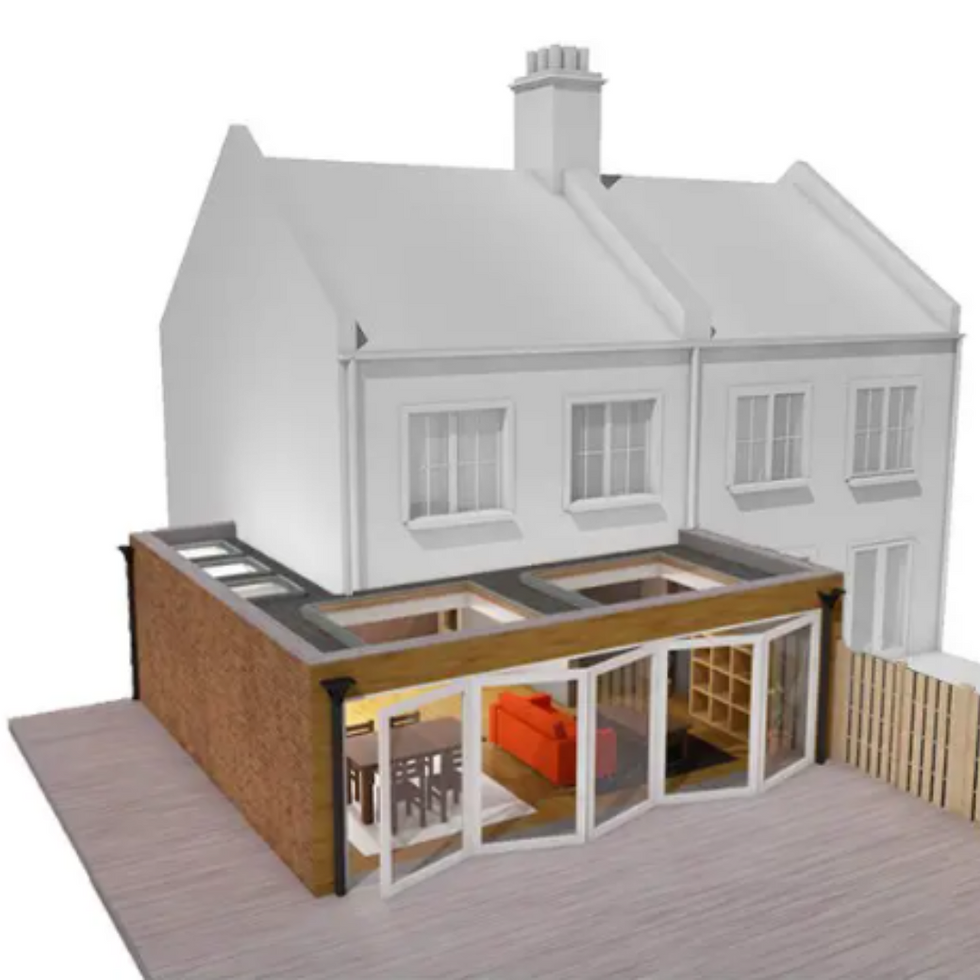Your Guide to Single-Storey Extensions Under Permitted Development in Edinburgh
- LBSC Limited

- Dec 9, 2024
- 3 min read

Introduction
Single storey extensions In Edinburgh constructed under Permitted Development can transform your home, offering extra space and functionality without the need for a lengthy planning permission process. Thanks to permitted development rights, many homeowners in Edinburgh can extend their properties quickly and affordably while staying within the law.
In this blog, we’ll focus solely on single-storey extensions under permitted development—what’s allowed, what to consider, and how to make the most of your project.
What Are Permitted Development Rights for Single-Storey Extensions In Edinburgh?
Permitted development rights allow you to extend your home without submitting a full planning application, provided the extension meets specific criteria. These rules help streamline the process while ensuring extensions are in harmony with the surrounding neighbourhood.
Key Rules for Single-Storey Extensions Under Permitted Development
To qualify as permitted development, your single-storey extension must:
Size Limits:
Extend up to 3 metres from the rear wall for terraced and semi-detached houses.
Extend up to 4 metres from the rear wall for detached houses.
Under temporary rules, larger extensions (6m or 8m) may be allowed with prior approval from Edinburgh City Council.
Height Restrictions:
The maximum height is 4 metres.
The eaves height must not exceed the eaves of the existing property.
Materials:
The extension must use materials that are similar in appearance to the existing property.
Garden Space:
The extension cannot cover more than 50% of the land around the original house, including any previous extensions.
Boundaries:
The extension must not encroach on neighbouring properties or block access.

Benefits of a Single-Storey Extension Under Permitted Development
Quick and Cost-Effective:
By avoiding the planning permission process, you can save time and money, making your project more efficient.
Enhanced Living Space:
A single-storey extension is ideal for open-plan kitchens, dining areas, or additional family rooms.
Boosted Property Value:
A well-executed extension can significantly increase your home’s market appeal and resale value.
Minimal Disruption:
Single-storey projects are less invasive than larger extensions, reducing the impact on your daily life during construction.
Steps to Building a Single-Storey Extension Under Permitted Development
Confirm Your Eligibility:
Homes in conservation areas or listed buildings may have restrictions. Edinburgh City Council’s guidelines are a good place to start, or you can consult a professional builder for clarity.
Plan Your Design:
Work with a skilled builder to design an extension that meets your needs while staying within permitted development rules.
Apply for a Lawful Development Certificate:
Although not mandatory, this certificate provides official confirmation that your extension complies with permitted development rights.
Build with Confidence:
Once designs are finalised, construction can begin. A reputable builder will ensure the project meets all building regulations.
Conclusion
A single-storey extension under permitted development is a fantastic way to expand your home without the complications of planning permission.
By carefully following the guidelines, you can create a functional, beautiful space that enhances your lifestyle and adds value to your property.
Whether you’re dreaming of an open-plan kitchen, a cosy family room, or a modern home office, the right design and execution make all the difference. Working with experienced builders ensures a seamless process, from initial planning to the final finishes.
If you’re considering a single-storey extension in Edinburgh, now is the perfect time to get started. With the right team, your project can become a reality with minimal hassle and maximum results.




Comments